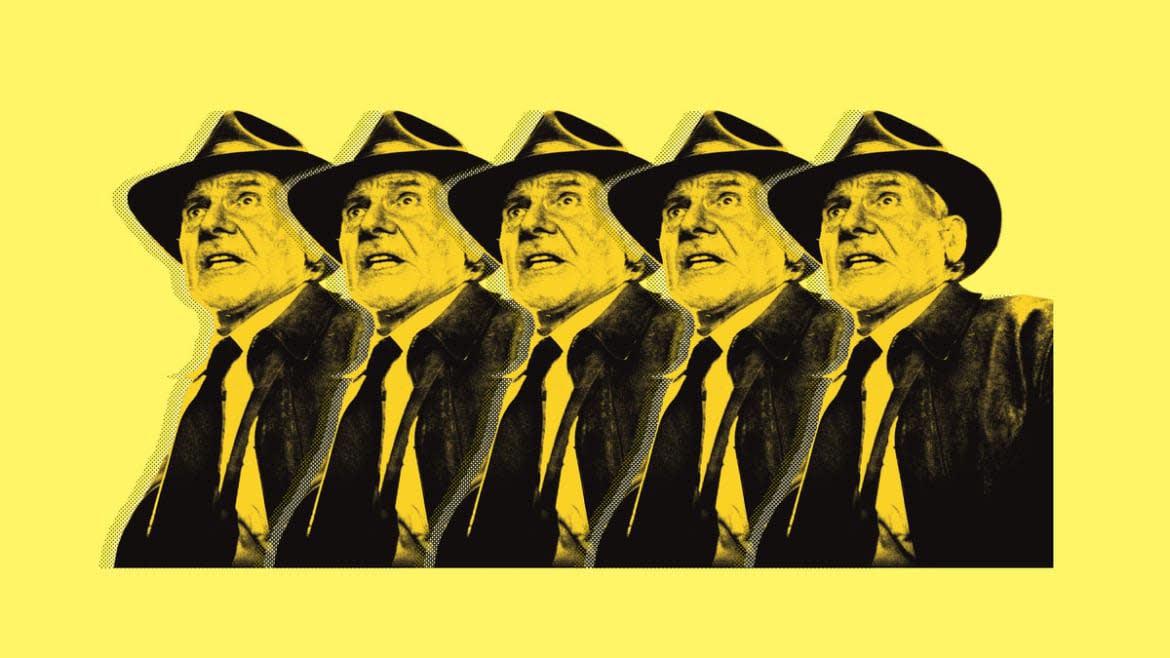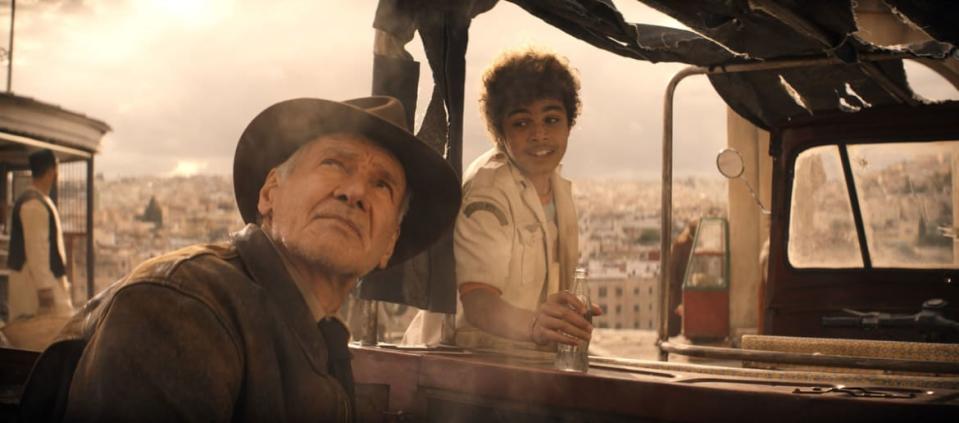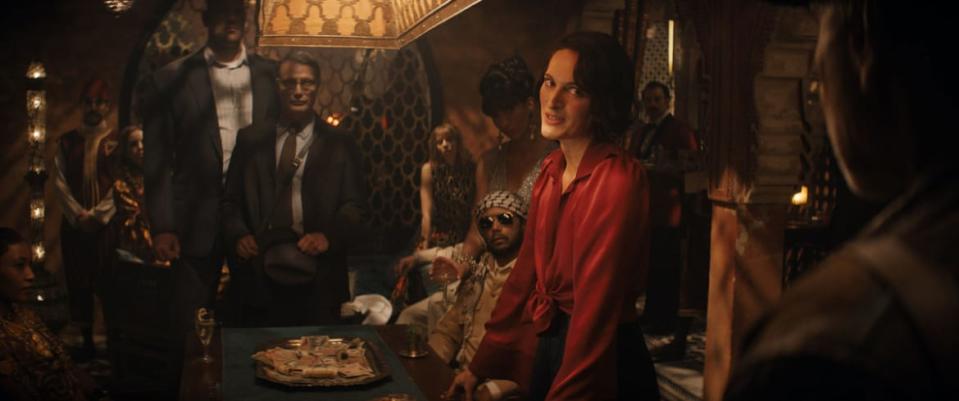Harrison Ford’s Return as Indiana Jones Is So Damn Disappointing

You can’t go home again, but don’t tell that to Indiana Jones and the Dial of Destiny, which gives 80-year-old Harrison Ford his trusty fedora and whip and sends his famed archaeologist on one last international artifact-hunting adventure.
In every respect, this fifth entry in the decades-spanning series turns its gaze backwards, from its numerous shout-outs to prior entries to its reuse of John Williams’ iconic musical themes to its supernaturally oriented story itself. Yet despite this guiding interest in yesteryear, the wannabe-blockbuster sequel (in theaters June 30) is an act of nostalgia that, at heart, isn’t true to that which it’s nostalgic for.
Directed by James Mangold (taking over for Steven Spielberg, who helmed the previous four installments), Indiana Jones and the Dial of Destiny is primarily set in 1969, but works hard to make itself look like its ancestors, whether its action takes place in bustling New York City, the narrow streets and marketplaces of Tangiers, or the dark subterranean caves of Sicily.
Mangold does his best Spielberg imitation, full of set pieces in which guns (and other items) are thrown, kicked, and slid across surfaces, people race about on foot and in vehicles, and fisticuffs and firefights amplify the overarching sense of danger. Traversing ancient sites or contemporary milieus, its grouchy hero routinely bickering with his feisty sidekicks, the film is alternately sunburnt and windswept, jovial and swashbuckling. It’s a deliberate attempt at recapturing that old Indy magic, and on the surface, at least, it plays as a passable pantomime.
Indiana Jones and the Dial of Destiny’s plot concerns a recently retired Indy being forced into an unlikely partnership with his goddaughter Helena Shaw (Phoebe Waller Bridge), who’s on the hunt for a relic—the Antikythera, a mysterious dial created by Archimedes—that her father (Toby Jones) spent his lifetime seeking, and which is also coveted by Jürgen Voller (Mads Mikkelsen), a former Nazi who’s helped the U.S. win the Space Race, and whose pursuit of the Antikythera is funded by the American government.
There’s a persistent focus on time, and age, be it gray-haired Indy banging on his young hippie neighbors’ door to complain about the noise (turn down the Beatles!), or Helena making cracks about his creakiness. That’s complemented by a host of cameos and references to preceding big-screen outings: artifact rooms, snakes (of a sort), creepy crawly bugs, ancient puzzles, rickety rope bridges, cobwebby skeletons, and outright remarks about The Temple of Doom are merely some of the numerous elements that strive to make this follow-up feel like a continuation.
That modus operandi is furthered by a narrative that (no spoilers here) plays as a figurative and literal quest into the past, beginning with a 1945 prologue in which Indy battles some of Hitler’s minions—including Voller—for control of the spear that pierced the flesh of Christ. Indiana Jones and the Dial of Destiny accomplishes this intro by de-aging Ford to resemble his younger self, and that feat is again replicated later, when the archaeologist is depicted in middle age. With a doggedness that borders on the desperate, the film stares into the rear-view mirror for its action and/or for its inspiration, such that it’s constantly—to the point of tediousness—straddling the line between then and “now.”
Harrison Ford—and Indiana Jones—Deserves Better Than ‘Dial of Destiny’
Unfortunately, what was once tactile and vigorous is now rendered insubstantial and flat by an incessant reliance on computerization. Indiana Jones and the Dial of Destiny’s opening gimmick is convincing for a few initial close-ups, and then devolves into uncanny valley artificiality; thirtysomething Ford is an impressive feat of techno-wizardry that nonetheless isn’t up to par.
Simply put—you can’t stop noticing the slightly awkward sleight of hand that went into this trick. Not helping matters, Mangold employs digital effects for every other shot during this showstopper. Not only do Ford and Mikkelsen look fake—highlighted by an early master shot of Indy racing across a train’s rooftop in the moonlight that proves downright video game-ish—but so too do the environments through which a speeding train whizzes, including a tunnel whose roof Indy is pressed against (without losing his hat!) in what may be the most ridiculously unreal shot in a franchise overflowing with them.

The remainder of Indiana Jones and the Dial of Destiny is a similar morass of CGI hollowness. Every domestic and international backdrop appears to have been created on a PC, undercutting the material’s soaring, sweeping scope. Most interior-vehicle shots have likewise been filmed on a stage and then embellished with exterior green-screen effects. The cavernous caves and cloudy airborne heights that Indy navigates boast a phony plasticky sheen, as does a NYC ticker-tape parade, a horseback race through the subways, and all sorts of car and plane-related exploits.
There isn’t a moment throughout Mangold’s sequel when CGI enhancements aren’t glaringly ever-present, to the point that even Ford himself is often replaced by a high-tech proxy—a ruse that may have been necessitated by the actor’s inability to pull off some of his character’s muscular maneuvers, but still amplifies the proceedings’ insubstantiality.
Devoid of weight and, therefore, any sense of danger and excitement—seeing a CGI avatar leap between automobiles, for example, isn’t nearly as electrifying as watching an actual person do it—Indiana Jones and the Dial of Destiny winds up paying homage to the past via a bevy of modern-day tools that are anathema to the series’ rugged, can-do spirit.

Spielberg certainly utilized plenty of cinematic effects in his Indy ventures, which themselves were tributes to the rollicking serials of the ’30s and ’40s. Yet he never did so at the expense of staging authentic stunts in actual physical locations in order to conjure an exhilarating air of peril and discovery—and never to the overwhelming degree that Mangold does here. Whatever their shortcomings, the first four Indiana Jones affairs are larger-than-life sagas whose thrills come from witnessing flesh-and-blood humans accomplish daring things in a concrete world.
From every angle, the archaeologist’s big-screen finale comes across as a computer-crafted approximation of the genuine article—a construction that’s fundamentally at odds with the film’s guiding celebration of the past. A closing note tries to make the case that Indy needs to look ahead rather than behind, which certainly resonates as a last-ditch attempt at justifying the preceding onslaught of 21st-century effects. Coming on the heels of so much synthetic sound and fury, however, the gesture is too little, too late. Trying to do old-school nostalgia in new-school fashion, it turns out, is a choice that was not made wisely.
Get the Daily Beast's biggest scoops and scandals delivered right to your inbox. Sign up now.
Stay informed and gain unlimited access to the Daily Beast's unmatched reporting. Subscribe now.

 Yahoo News
Yahoo News 
